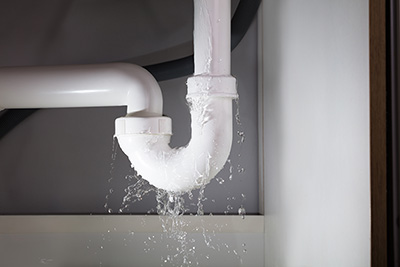Water leaks can be sneaky, often developing out of sight and causing significant damage before they’re even noticed. Left untreated, a small leak can lead to costly repairs, mold growth, and higher water bills. Detecting a water leak early is crucial in preventing damage to your home and saving money. In this blog, we’ll cover practical tips to help you identify hidden water leaks before they spiral into expensive problems.

1. Check Your Water Meter
Your water meter is one of the easiest ways to determine if you have a leak. Here’s how to use it:
- Step 1: Turn off all water fixtures in your home, ensuring that no water is being used (this includes faucets, toilets, and appliances like dishwashers or washing machines).
- Step 2: Go to your water meter and note the reading.
- Step 3: Wait for about 1-2 hours without using any water.
- Step 4: Check the meter again. If the reading has changed, you likely have a leak.
If you suspect a leak but the water meter doesn’t show changes right away, try repeating the process overnight. A small or slow leak might take longer to reveal itself.
2. Monitor Your Water Bill
A sudden spike in your water bill without an increase in usage could be a sign of a hidden leak. Compare your current bill to previous months—if there’s an unexplained rise, it’s worth investigating. Small leaks can waste thousands of gallons of water over time, contributing to unnecessary expenses.
3. Inspect Your Water Usage
A typical family of four should not use more than 12,000 gallons of water per month (or 400 gallons per day). If your usage exceeds this amount during cooler months when outdoor water use is lower, it could indicate a leak.
4. Look for Water Stains and Damage
Visible signs of water damage are often a clear indication of a hidden leak. Check the following areas regularly:
- Ceilings and Walls: Look for discoloration, bubbling paint, or peeling wallpaper. These are signs that water may be leaking from pipes hidden within the walls.
- Floors: Warped, buckling, or sagging floors are a red flag for leaks, especially near kitchens, bathrooms, and laundry areas.
- Under Sinks and Cabinets: Leaks often occur in cabinets under sinks or behind appliances. Check for moisture, puddles, or mold growth in these areas.
5. Test Your Toilets
Toilets are one of the most common sources of hidden water leaks. A simple test can help you determine if your toilet is leaking:
- Step 1: Add a few drops of food coloring to the toilet tank.
- Step 2: Wait 10-15 minutes without flushing.
- Step 3: If the colored water appears in the toilet bowl, you have a leak. This usually indicates that the flapper valve inside the tank is faulty and needs replacing.
6. Listen for Unusual Sounds
Even if you can’t see the leak, you might hear it. If you notice the sound of running or dripping water when no faucets are on, it could be a sign of a hidden leak. Pay attention to sounds around your plumbing fixtures, walls, and floors.
7. Smell for Musty Odors
Leaks can lead to damp environments that promote mold and mildew growth. If you detect a musty odor in certain areas of your home, especially near sinks, bathrooms, or basements, it’s worth checking for leaks. Mold not only damages your home but can also cause health problems, so early detection is essential.
8. Check Exterior Fixtures
Don’t forget to inspect outdoor plumbing and fixtures. Garden hoses, irrigation systems, and spigots can also leak. If you notice damp spots in your yard or areas where grass is growing faster than usual, this could indicate an underground leak.
9. Use Leak Detection Devices
For homeowners who want an extra layer of protection, there are several high-tech leak detection devices available. These smart devices can be installed on your water line and will alert you to any abnormal water flow. Some systems can even shut off the water supply in the event of a major leak, preventing significant damage.
10. Hire a Professional Plumber
If you’ve checked for the signs above and still can’t find the source of a leak, it’s time to call in a professional plumber. Plumbers have specialized tools like infrared cameras and acoustic listening devices to detect hidden leaks behind walls or under floors without invasive methods. A professional inspection can save you time and prevent further damage.
Conclusion
Early detection of water leaks is critical in preventing costly damage and maintaining the health of your home. By staying vigilant and following these tips, you can catch leaks before they become a major problem. If you suspect a leak but can’t locate it, don’t hesitate to contact a licensed plumber to assess the situation and perform necessary repairs.
Elite Plumbing of Florida provides plumbing services in Clearwater, Palm Harbor, and Safety Harbor and most of Pinellas County.
For more information, visit our website https://eliteplumbingoffloridallc.com/or call (727) 301-4846.
